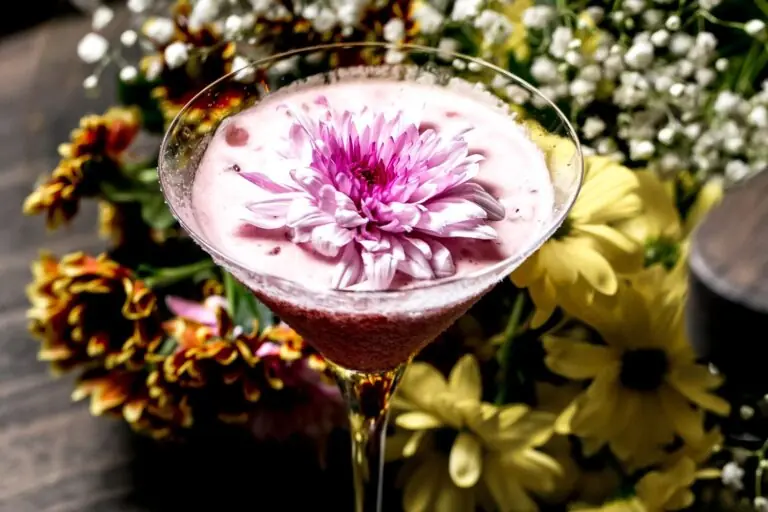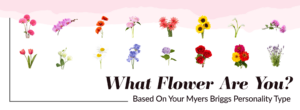Imagine the most romantic dinner you have ever seen (life, or in movies, or maybe dreams). Golden hues, sparkling eyes, and meaningful, deep talks. But let’s talk about the table and menu—it’s one where centerpieces are on the table, and food is infused with nature’s most elegant touch: edible flowers.
From velvety roses to delicate violets, these blooms don’t just add beauty to your plate; they bring subtle flavors that elevate your dining experience into something truly extraordinary. On the plus side, you can also use them to make cocktails!
Whether you’re planning a special celebration or looking for unique anniversary gifting ideas, why not surprise your partner with a home-cooked gourmet meal sprinkled with floral magic? Picture a decadent lavender-infused dessert, a rose-petal salad, or even chamomile-kissed honey drizzled over fresh fruit. Pair it all with a glass of French bubbly champagne and flowers, and you have the perfect recipe for an unforgettable evening.
In this guide, we’ll take you through a curated edible flowers list, highlighting the safest and most delicious blooms to use in your cooking and décor. Get ready to transform your meals into an elegant masterpiece—because sometimes, the best gifts aren’t wrapped in a box, but served on a plate.
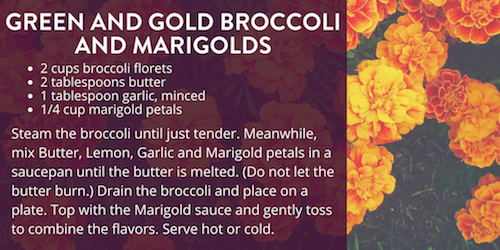
What Are Edible Flowers?
Not all flowers are just for admiring—some are perfectly safe to eat and can enhance both the flavor and presentation of your dishes. But what makes a flower edible, and how do you know which ones are safe? Let’s break it down.
What Makes a Flower Edible?
A flower is considered edible if it meets these criteria:
- Non-toxic compounds – Unlike some flowers that contain harmful alkaloids or glycosides, edible flowers are free from toxic substances and safe for human consumption.
- Grown without pesticides – Many commercial flowers are treated with chemicals that aren’t safe for ingestion. Always ensure your edible blooms come from organic or culinary-approved sources.
- Palatable taste – While safety is key, flavor matters too! Edible flowers offer a variety of flavors, from sweet and floral (like roses and violets) to spicy and peppery (like nasturtiums and marigolds).
How Can You Tell If a Flower is Edible?
If you’re unsure whether a flower is safe to eat, follow these steps:
- Step #1: Research its scientific classification – Some flowers have toxic lookalikes. For example, while certain types of orchids (like Dendrobiums and the Vanilla orchid) are safe, other varieties may not be. Always verify with a trusted botanical guide.
- Step #2: Check for culinary history – Many edible flowers, such as hibiscus and elderflower, have been used in food and medicine for centuries. If a bloom has a long history of culinary use, it’s a strong indicator of safety.
- Step #3: Do a small taste test – If you’re confident a flower is safe but haven’t tried it before, start with a tiny nibble. Some flowers, while edible, have strong or unusual flavors that might not suit every dish.
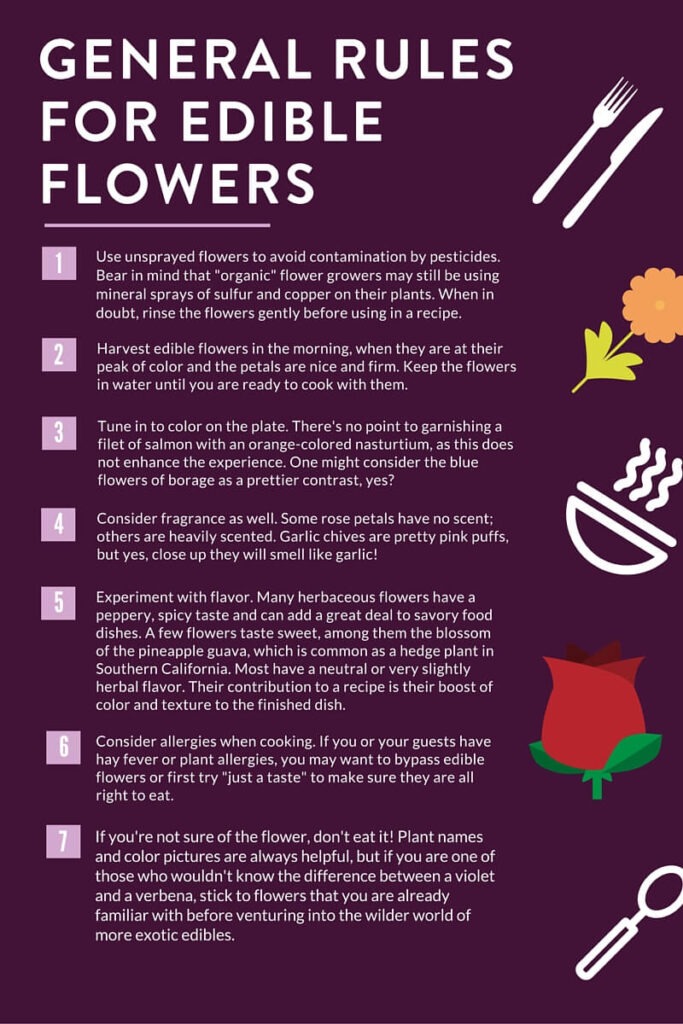
Comprehensive Edible Flowers List
At Ode à la Rose, we’re not just experts in flowers—we live and breathe them. Flowers aren’t just something we sell from our vast selection of blooms; they’re an experience, a passion, and in this case, a delicious addition to your plate.
Whether you’re an adventurous foodie or just curious about floral flavors, we’ve got you covered. Below, we’ve broken down a list of edible flowers that are as delightful to taste as they are to admire.
From timeless classics to rare exotic blooms, these flowers bring color, aroma, and a touch of nature’s magic to your meals.
1. Popular Edible Flowers
Some flowers don’t just stand the test of time in bouquets—they’ve made their way into culinary history as well. These well-loved edible blooms are commonly used in salads, desserts, teas, and even gourmet dishes, offering a variety of flavors and textures that make them kitchen essentials. The most popular ones include:
Roses – The ultimate symbol of romance, but did you know that roses are also edible? Their petals add a subtle sweetness to jams, syrups, and even desserts like Turkish delight. The flavor varies by color, with deeper reds offering a stronger floral taste and lighter petals leaning towards fruity notes.
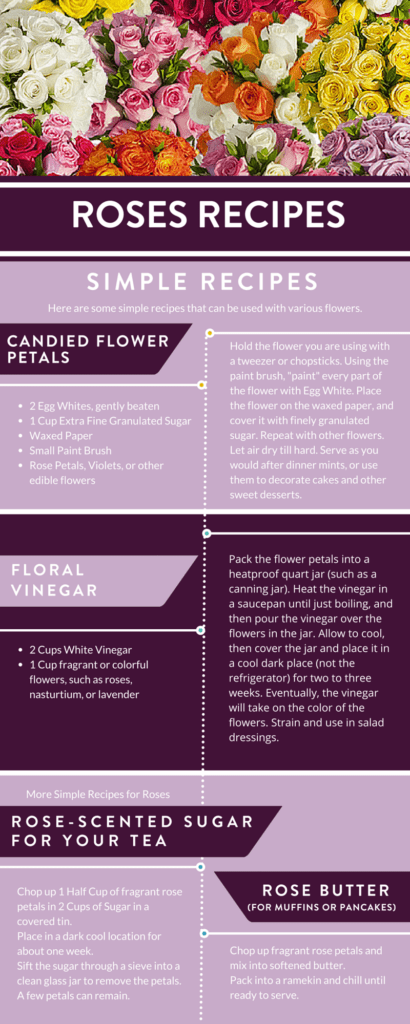
Nasturtiums – These cheerful blooms aren’t just pretty—they bring a peppery kick similar to arugula! Used in everything from fresh salads to garnishes, they add a bold, zesty flavor that surprises the palate. Plus, they’re packed with vitamin C.
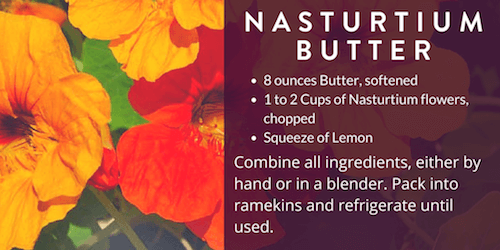
Pansies & Violets – These delicate flowers look like nature’s own confetti, and they taste as good as they look! Their mild, slightly grassy flavor makes them perfect for decorating cakes, freezing into ice cubes, or floating atop a refreshing drink. Their deep purple color makes every dish or cocktail pop up!
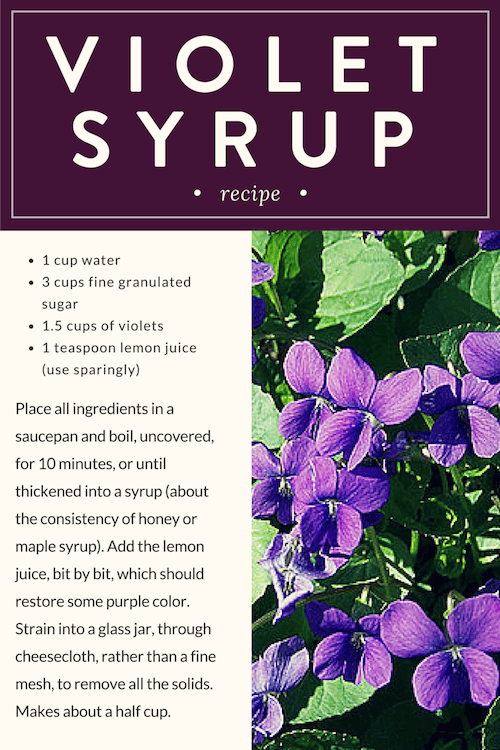
Vanilla Orchid – The unsung hero behind one of the world’s most beloved flavors. The Vanilla orchid is where vanilla beans originate, but did you know its flowers are also edible? Though rarely used in their fresh form, these blossoms add a light vanilla fragrance to syrups and desserts.
Black Locust – Lesser known but absolutely enchanting, Black Locust flowers have a sweet, almost honey-like flavor. They’re often used in fritters or infused into simple syrups for an elegant twist.
2. Herbal Edible Flowers
Herbs aren’t just about leaves—some of their flowers are just as flavorful and useful in the kitchen. These blooms come from well-known herbs and pack a punch in both fragrance and taste. If you love fresh herbal flavors, these flowers deserve a spot on your plate.
- Lavender – The queen of aromatic flowers, lavender offers a bold floral taste with citrusy undertones. Whether used in teas, baked into shortbread cookies, or sprinkled over a honey-drizzled brie, its soothing scent and flavor are unmistakable.
- Chamomile – If relaxation had a taste, it would be chamomile. Best known for its calming tea, this daisy-like flower has a gentle, apple-like flavor that pairs well with honey and citrus in everything from drinks to desserts.
- Borage – With its vibrant blue star-shaped blooms, borage is nature’s own edible decoration. It has a refreshing cucumber-like taste, making it a wonderful addition to summer salads, lemonades, and chilled soups.
- Mint Blossoms – If you love mint, you’ll love its flowers! Slightly milder but still minty-fresh, these tiny blooms are great in cocktails, infused water, or sprinkled over fruit salads.
- Wild Thyme Blossoms – Tiny but mighty, wild thyme flowers carry the same earthy, slightly minty aroma as the herb itself. They’re a fantastic addition to roasted vegetables, grilled meats, or even infused into honey for a floral-meets-savory twist.
- Rosemary Flowers – These delicate purple blooms have a milder version of rosemary’s signature piney, woody flavor. Try sprinkling them over focaccia, mixing them into marinades, or even using them as a fragrant garnish for roasted potatoes and lamb dishes for special anniversary occasions and dinners.
3. Exotic Edible Flowers
For those who love stepping outside the ordinary, these exotic edible flowers bring rare and unexpected flavors to the table. Some are tropical, some are unique, but all of them will make your dishes feel like a chef’s masterpiece.
- Hibiscus—Bold, tangy, and vibrantly red, hibiscus flowers are a staple in teas, cocktails, and even savory dishes. Their tart flavor, reminiscent of cranberries, makes them a favorite in refreshing drinks like hibiscus lemonade or floral-infused cocktails.
- Squash Blossoms – These golden blooms aren’t just beautiful; they’re deliciously delicate. A favorite in Italian cuisine, they’re often stuffed with ricotta and herbs before being fried to crispy perfection.
- Elderflowers – If you’ve ever sipped a glass of elderflower cordial or St-Germain liqueur, you’ve tasted the magic of elderflowers. Their delicate, subtly floral taste is perfect for infusions, syrups, and elegant desserts.
- Banana Blossoms – Yes, the flowers of the banana tree are edible! Often used as a meat substitute in vegan dishes, their texture is similar to artichokes, making them a great addition to curries and stir-fries.
How to Safely Use Edible Flowers
Before you start sprinkling petals onto your dishes like a gourmet chef, it’s important to understand how to use edible flowers safely. While these blooms can add beauty and flavor, not all flowers are safe to eat, and some come with precautions. Follow these essential tips to ensure a safe and delicious floral experience:
- Know Your Flowers – Always double-check that the flower you’re using is truly edible. Some flowers look similar to edible varieties but can be toxic (just like with mushrooms). Stick to a trusted edible flowers list and verify with reputable sources.
- Go Organic or Homegrown – Many store-bought flowers are treated with pesticides and chemicals that aren’t food-safe. If you’re not growing them yourself, make sure to buy organic, culinary-grade flowers from a reliable supplier.
- Avoid Roadside or Unknown Blooms – Flowers growing in public areas may have been exposed to pollution, pesticides, or other contaminants. If you’re foraging, thoroughly research to ensure your pick is safe.
- Wash Thoroughly – Even if the flowers are from your own garden, gently rinse them with cold water to remove any dirt, insects, or residue. Pat them dry before use.Ideally, wash them with a bit of baking soda to eliminate leftover bacteria and fungi.
- Use in Moderation – While edible flowers can elevate your meals, they should be used in small amounts. Like with spicy chilly pepper— they;re good and healthy, but might be harmful if overdosing. Some flowers have strong flavors, and overuse can overpower your dish. Others (like lavender) have potent essential oils that can cause digestive discomfort if consumed in excess.
Creative Ways to Use Edible Flowers
Edible flowers aren’t just a feast for the eyes—they add depth, aroma, and flavor to all kinds of dishes and drinks. Whether you’re looking to add a floral accent to a meal, create stunning beverages, or elevate your presentation, edible flowers provide endless possibilities. From delicate petals in salads to floral-infused syrups and desserts, these blossoms can turn the simplest recipes into something truly special.
Let’s explore some of the best ways to incorporate them into your cooking, drinks, and garnishes.
In Cooking: Elevate Your Meals with Edible Flowers
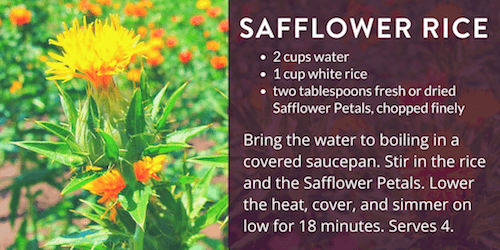
Cooking with flowers is a time-honored tradition that spans cultures and cuisines. Their flavors range from subtly sweet to bold and peppery, making them versatile enough to enhance both savory and sweet dishes. Some flowers infuse delicate floral notes into desserts, while others add a fresh herbal kick to oils and butter.
Here are a few ways to use edible flowers in your meals:
1. Floral Salad with Honey-Lavender Dressing
A salad that not only looks like a masterpiece but tastes like one too! Nasturtiums add a spicy note, violets bring a mild sweetness, and borage offers a cucumber-like freshness.
- Ingredients: Mixed greens, edible flowers (nasturtiums, violets, borage), goat cheese, toasted almonds, cherry tomatoes.
- Dressing: Olive oil, apple cider vinegar, honey, dried lavender, salt & pepper.
- Method: Toss everything together and drizzle with the honey-lavender dressing for a fresh, floral touch.
2. Lavender & Lemon Shortbread Cookies
Lavender’s subtle floral notes pair perfectly with citrus, creating a delicate, fragrant treat.
- Ingredients: Butter, sugar, flour, dried lavender, lemon zest, vanilla extract, salt.
- Method: Cream butter and sugar, mix in the lavender and lemon zest, add flour, chill dough, slice, and bake.
3. Rosemary Flower & Garlic Infused Olive Oil
Perfect for drizzling over roasted vegetables, meats, or dipping fresh bread.
- Ingredients: Extra virgin olive oil, garlic, rosemary flowers.
- Method: Gently heat oil with garlic and rosemary flowers, let cool, strain, and store.
In Beverages: Infuse Your Drinks with Floral Elegance
Flowers have long been used to create aromatic and flavorful beverages. Whether steeped in teas, blended into syrups, or infused in cocktails, edible flowers can add a refreshing and sophisticated twist to your drinks.
1. Chamomile & Honey Tea Latte
A warm and soothing drink, perfect for winding down.
- Ingredients: Milk (or oat/almond milk), dried chamomile flowers, honey, vanilla extract.
- Method: Heat milk, steep chamomile flowers, remove flowers, stir in honey and vanilla, whisk until frothy.
2. Hibiscus & Rose Mocktail
This vibrant, tangy drink is as delicious as it is beautiful.
- Ingredients: Brewed hibiscus tea, sparkling water, rose syrup, lemon juice, ice cubes with frozen edible flowers.
- Method: Brew and chill hibiscus tea, add lemon juice and rose syrup, pour over floral ice cubes, top with sparkling water.
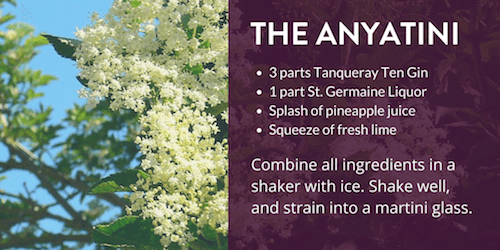
3. Elderflower Syrup for Cocktails & Desserts
A floral syrup that can be mixed into cocktails, lemonade, or drizzled over pancakes.
- Ingredients: Water, sugar, fresh elderflowers.
- Method: Heat water and sugar, steep elderflowers for 24 hours, strain, and store.
As Garnishes: Make Every Dish an Edible Work of Art
Sometimes, all a dish needs is a touch of floral beauty. Whether used to decorate cakes, or charcuterie boards, or frozen into ice cubes for elegant drinks, edible flowers can transform ordinary presentation into something extraordinary.
1. Floral Cake Decorations
Press edible flowers into frosting for an ethereal, garden-inspired look for a very special birthday cake. Roses, pansies, and violets are great choices.
- Tip: Lightly press the flowers onto fresh frosting so they adhere naturally. Brush with egg white and fine sugar for a crystallized effect.
2. Edible Flowers on Charcuterie Boards
Flowers add color, texture, and even complementary flavors to a well-curated board.
- Best Flowers to Use: Nasturtiums (peppery), borage (refreshing), rosemary flowers (herbaceous).
- Pairings: Cheese, honey, nuts, dried fruits.
3. Floral Ice Cubes for Drinks
Turn a simple beverage into a work of art with floral ice cubes.
- Method: Fill an ice cube tray halfway with water, freeze, add flowers, top with water, and freeze again.
What Flowers to Avoid?
While edible flowers can enhance your meals in stunning ways, not all blooms are safe to eat. Some flowers contain toxic compounds that can cause mild irritation, severe poisoning, or even fatal reactions. It’s crucial to know which flowers should never be consumed.
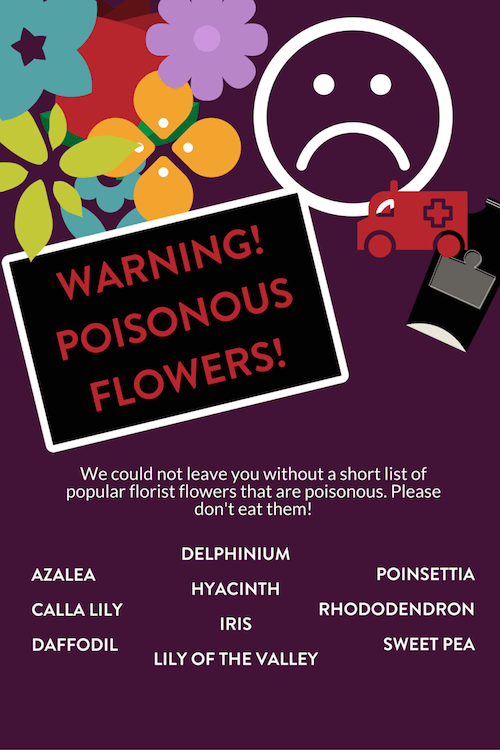
- Foxglove (Digitalis purpurea) – Beautiful but deadly, foxglove contains digitalis, a compound that affects heart function and can be fatal if ingested.
- Oleander (Nerium oleander) – Every part of this plant is highly toxic. Ingesting even a small amount can cause nausea, irregular heartbeat, and serious poisoning.
- Lily of the Valley (Convallaria majalis) – Its delicate bell-shaped flowers contain cardiac glycosides, which can trigger dizziness, vomiting, and heart complications.
- Daffodils (Narcissus spp.) – Their bulbs and flowers contain lycorine, a toxic alkaloid that can cause severe digestive distress.
- Hydrangea (Hydrangea spp.) – These lush blooms contain cyanogenic glycosides, which can release cyanide in the body, leading to poisoning symptoms.
- Azaleas & Rhododendrons – Contain grayanotoxins, which can cause nausea, dizziness, and severe poisoning. Even honey made from their nectar (known as “mad honey”) can be toxic.
- Wisteria (Wisteria spp.) – While stunning, its seeds and pods are highly toxic, causing nausea and diarrhea if ingested.
- Buttercups (Ranunculus spp.) – Contain ranunculin, which can cause blistering and irritation in the mouth and digestive tract.
Safety Tip: If you’re ever unsure whether a flower is edible, avoid consuming it. Stick to a trusted edible flowers list and buy from reputable sources to ensure safety.
Benefits of Using Edible Flowers
Beyond their beauty, edible flowers bring a variety of benefits to the table, making them an exciting addition to your culinary creations.
- Aesthetic Appeal – Edible flowers transform dishes into visually stunning works of art. Whether floating in a cocktail, adorning a cake, or scattered over a salad, they make any meal feel special.
- Flavor Enhancement – From the spicy, peppery bite of nasturtiums to the citrusy tang of hibiscus, flowers add depth and complexity to both sweet and savory dishes. They can be used in marinades, desserts, dressings, and beverages to introduce delicate or bold flavors.
- Nutritional Value – Many edible flowers are packed with vitamins, antioxidants, and essential minerals. For example:
- Marigolds (Calendula) – Rich in carotenoids, which support eye health.
- Hibiscus – High in vitamin C and known for its anti-inflammatory properties.
- Lavender & Chamomile – Contain calming compounds that aid relaxation and digestion.
- Aromatherapy & Mood-Boosting Effects – Flowers like lavender and rose have been shown to reduce stress and promote relaxation, both through their scent and when consumed in teas or desserts.
- Sustainability & Zero-Waste Cooking – Using flowers in food reduces waste by making use of nature’s natural bounty. Homegrown edible flowers are a fantastic way to add freshness to your meals while embracing an eco-friendly lifestyle.
- Versatility in Culinary Applications – Edible flowers can be used in countless ways—baked into bread, frozen into ice cubes, infused into oils, or blended into syrups. Their versatility makes them a great ingredient for both everyday meals and gourmet experiences.
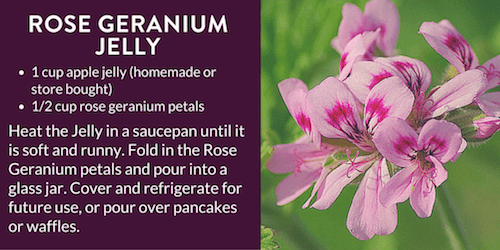
FAQs
Are All Flowers Edible?
No, not all flowers are edible! In fact, many contain toxic compounds that can cause digestive issues or severe poisoning. Flowers like foxglove, oleander, daffodils, and hydrangeas should never be consumed. Always reference a trusted edible flowers list before using blooms in food, and ensure they are pesticide-free. If you’re unsure, it’s best to avoid consumption.
Where Can I Buy Edible Flowers?
Edible flowers can be purchased at specialty grocery stores, farmers’ markets, and online retailers that sell organic, culinary-grade flowers. Florists typically sell flowers for decorative purposes, which may have been treated with pesticides. Always choose edible flowers labeled as safe for consumption from reputable sources like Whole Foods, gourmet food stores, or certified organic growers.
Can I Grow Edible Flowers at Home?
Yes! Growing edible flowers at home is a great way to ensure they are organic and safe. Flowers like pansies, violets, nasturtiums, calendula, and lavender thrive in home gardens and can be grown in pots or raised beds. Use organic soil, avoid chemical pesticides, and harvest flowers when they are fresh for the best flavor. With the right care, your garden can provide a year-round supply of beautiful and flavorful blooms!
Final Thoughts
Edible flowers are more than just a beautiful addition to your plate—they enhance flavors, add elegance, and bring a touch of creativity to your meals. Whether you’re crafting floral-infused beverages, garnishing desserts, or experimenting with new flavors, an edible flowers list is your key to safely and deliciously incorporating blooms into your kitchen.
At Ode à la Rose, we’re not just flower experts—we’re passionate about all things floral. From stunning bouquets to culinary inspiration, we believe flowers are an experience to be enjoyed in every way. Ready to explore the world of edible flowers? Use this edible flowers list to start your journey into floral-infused dining today!

